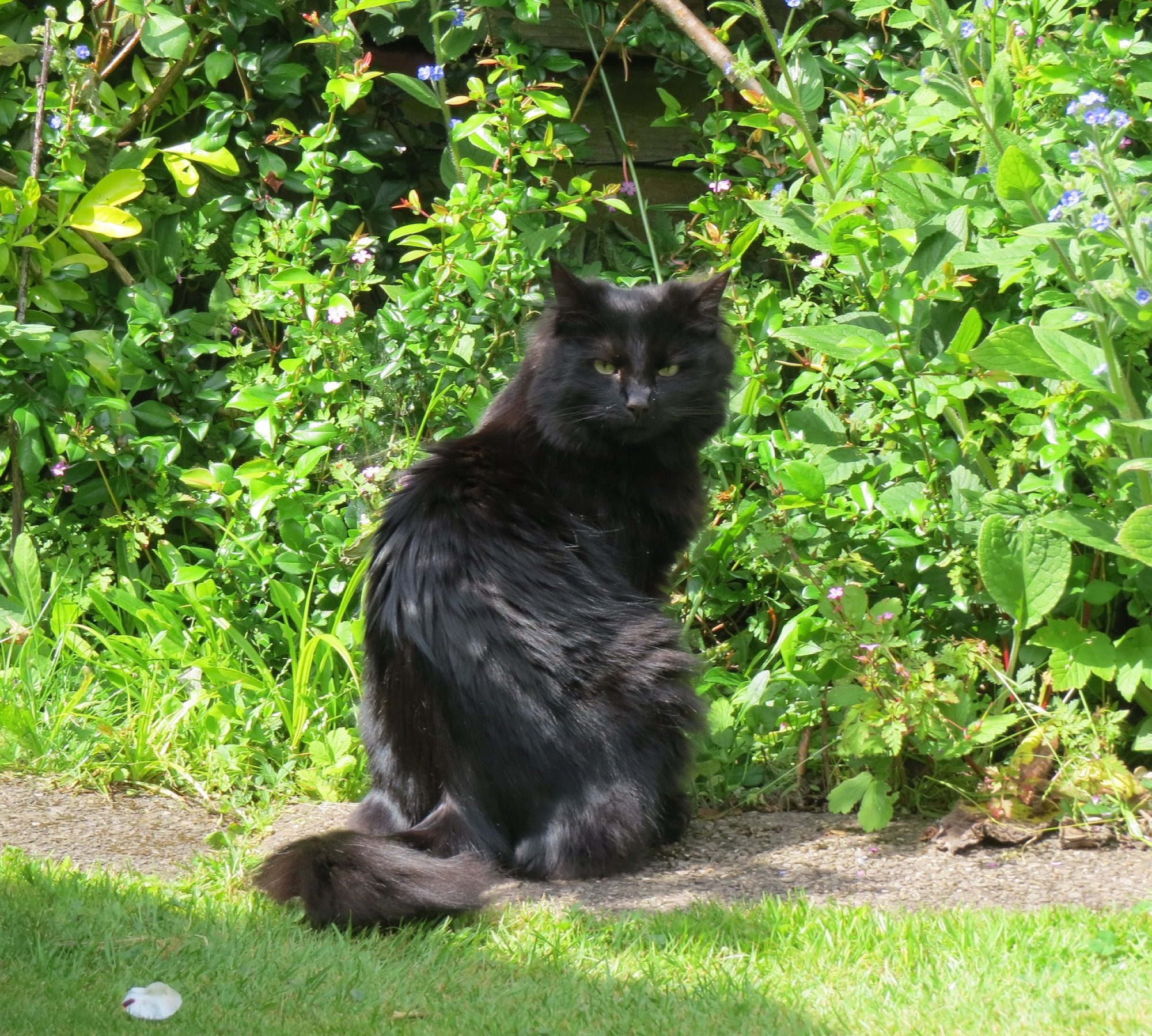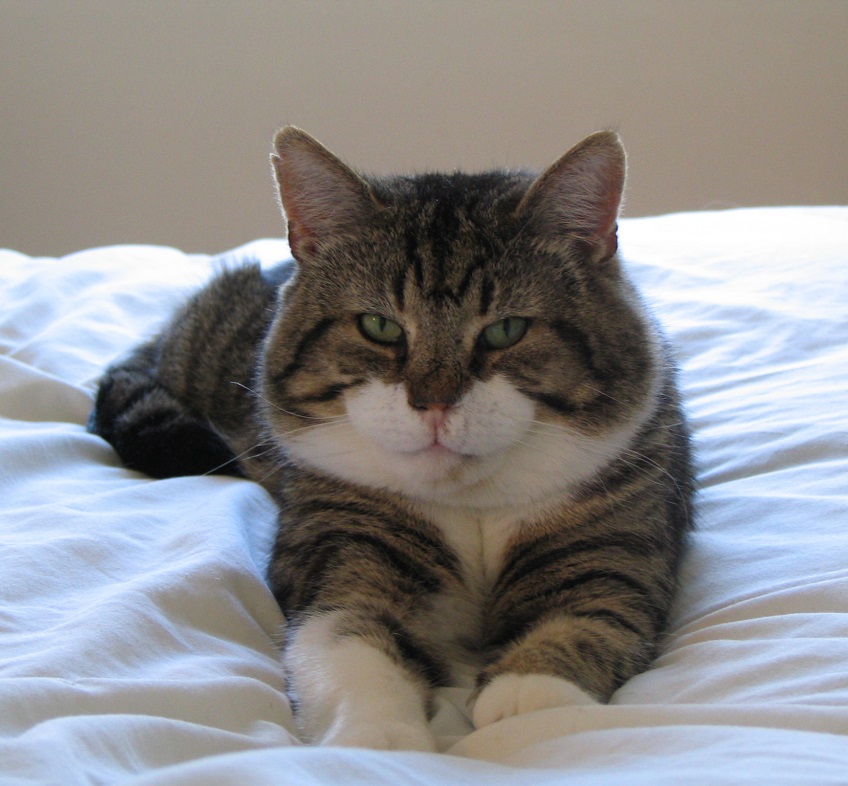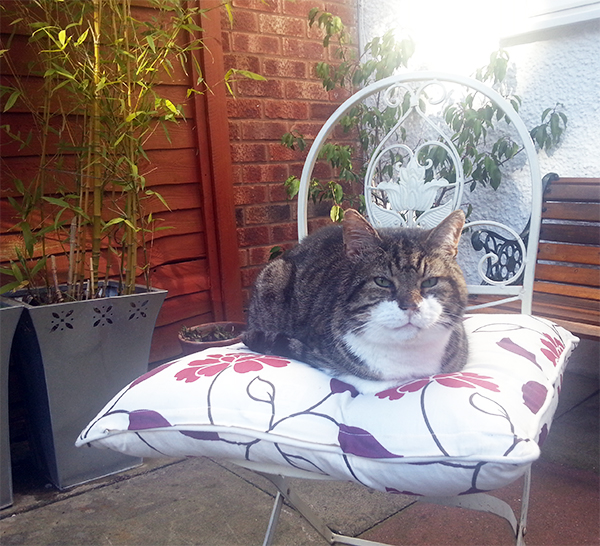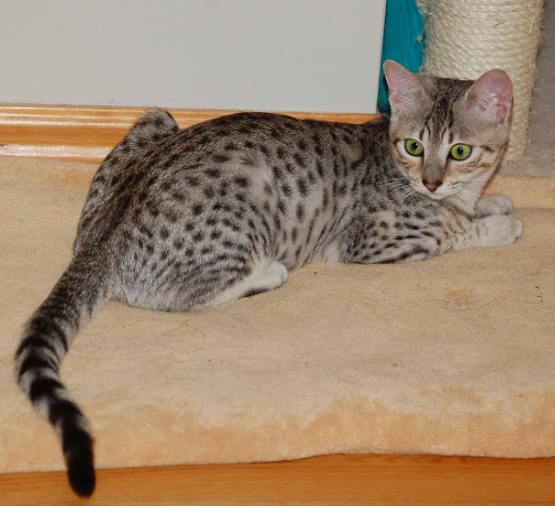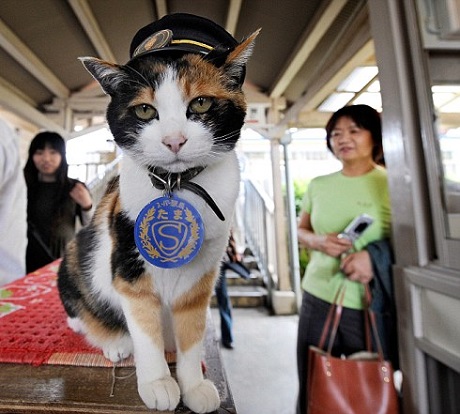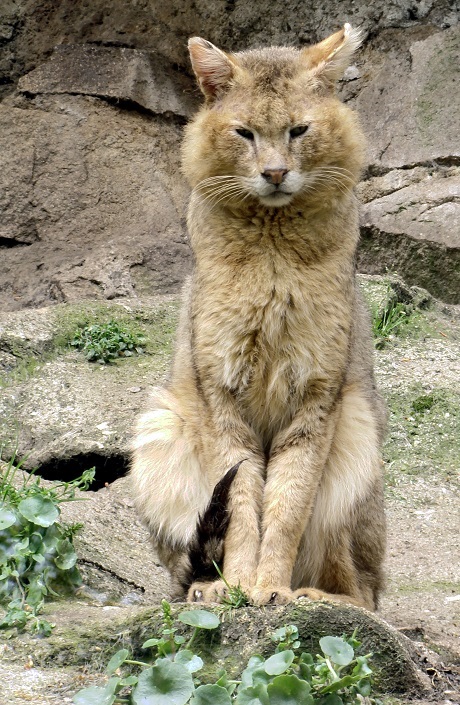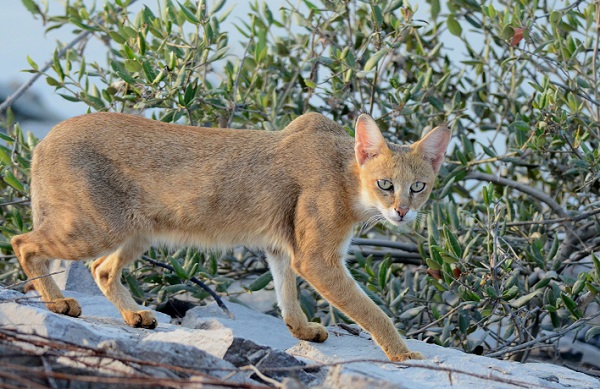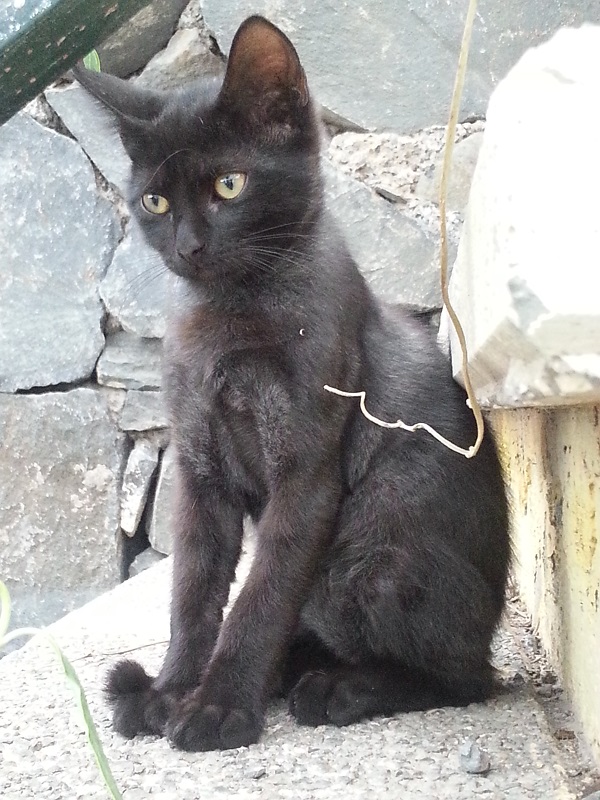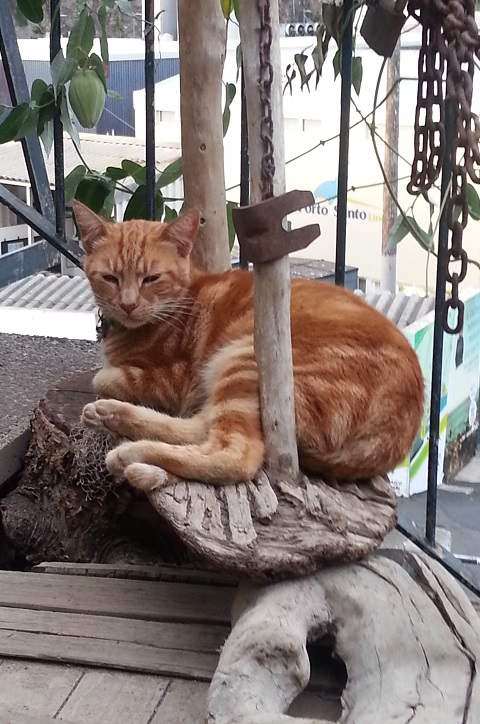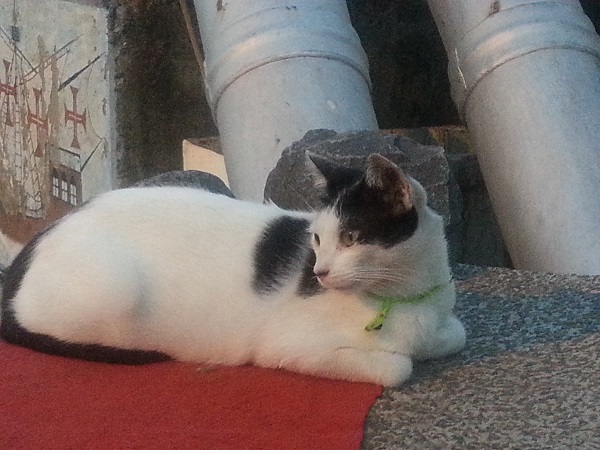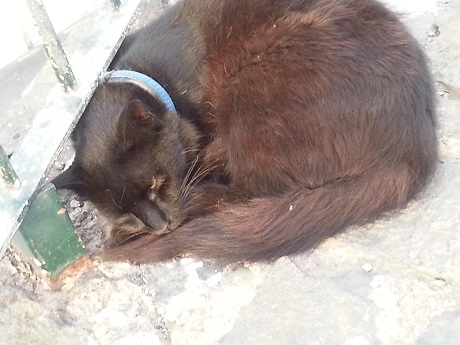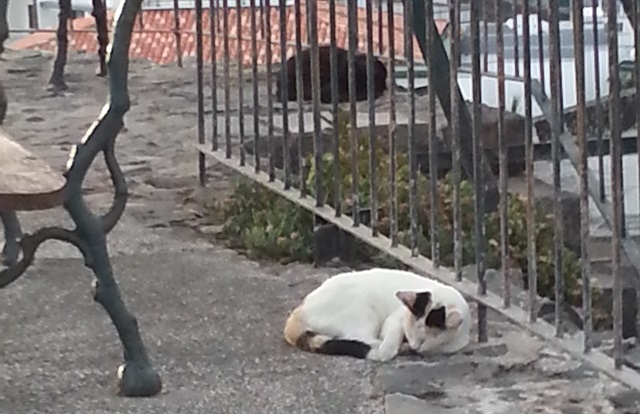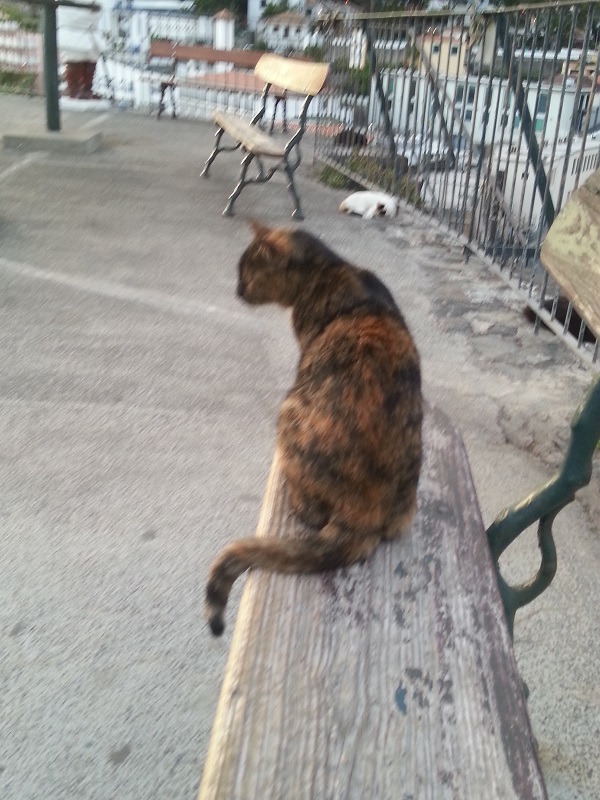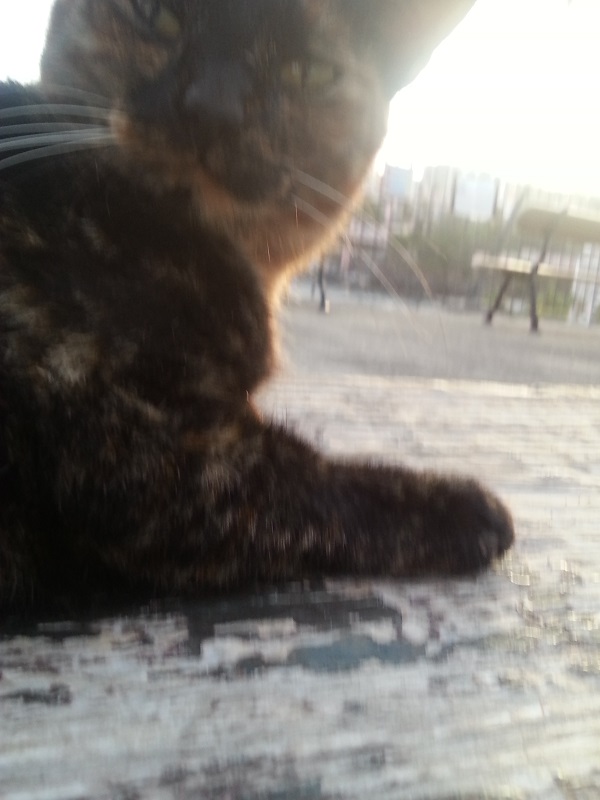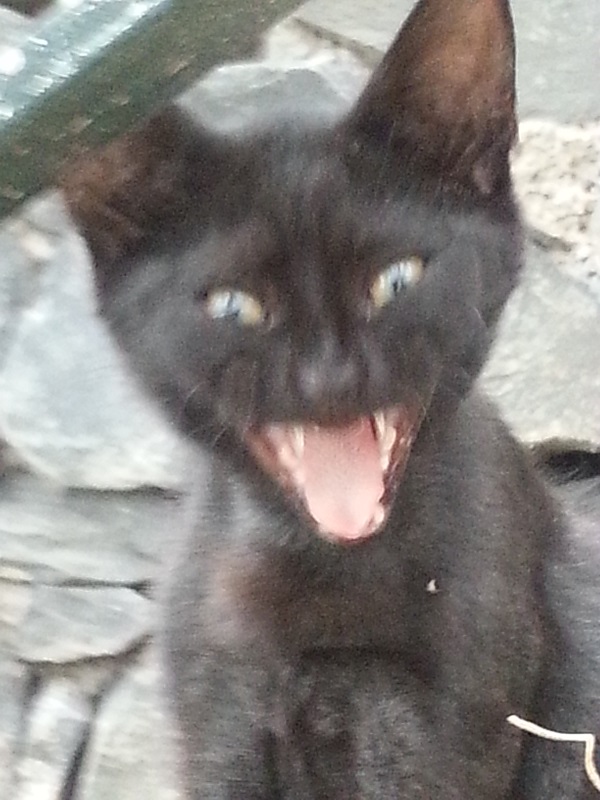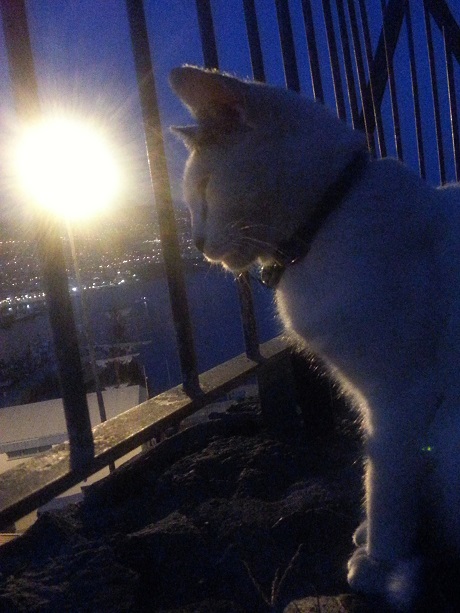Rest In Peace sweet Norman, our wondrous bonny boy.
The Sleeping Cat
Dear Reader, So Autumn has arrived again – how on earth did that happen?
Anyway, we cats make the most of all of the seasons – and the changing of the seasons is nature’s way of reminding humans and cats alike to follow our instincts, slow down and take things just that bit easier.
With that in mind, I, as September Cat of the month, have made….with the help of my trusted aid Ed…. an instructional video.
So please forget those pesky winds ruffling your coat and the dark nights drawing in. Just put your paws/feet (delete as appropriate) up and enjoy a Masterclass in pure relaxation.
Cat of the Month ~ September 2015
Norman x x x
p.s. I’m sure this will be a great watch for you folks who don’t have a cat too. You’ll get to see just all the fun that you are missing.
Egyptian Mau
Cat of the Month ~ August 2015
It has been proven that it was in Ancient Egypt where the feline we call the Egyptian Mau originated. Their ancestors are strongly and frequently depicted in the artworks of the Ancient Egyptians. Many of their pictures are still intact today and they show heavily spotted cats bearing the distinctive ‘mascara’ marking and coat barring seen on today’s Mau. Indeed recent findings in research studies lead by feline geneticist Leslie Lyons, PhD has confirmed that cats first originated in Egypt. There is archaeological and genetic evidence to show that cats first originated in the famous ‘fertile crescent’.
The Egyptian Mau breed has five unique physical features that should be apparent at a glance.
- One is the brow line and characteristic eye set that gives the breed a somewhat sad and anxious look.
- The eye color of the Mau is described as “gooseberry green”.
- A flap of skin extending from the posterior end of the ribcage to the hind leg gives the Mau a phenomenal leaping ability.
- The Mau can run at very high speed also due to its extended skin flap on the hind leg.
- Mau’s have a “tiptoe” graceful stance given by the hind legs being proportionally longer than the front legs.
It is said that the Egyptian Mau arrived in the USA in 1956 when Russian Princess Nathalie Troubetskoy, with help from Richard Gebhardt, imported three Maus from Italy: Two silver females, Baba and Liza, and a bronze male called ‘Jojo’. The Mau was granted recognition in The International Cat Association in 1979.
The Egyptian Mau has often been thought of as an aloof and shy breed. This may be true but when domesticated fully the Mau has a special affinity with its human family. It is a very close bond that is so different than with other breeds. A typical Mau will command attention and will not allow you to push it away, as it seems to require the fuss o fit’s immediate ‘keeper’. In addition the breed is intensely loyal (and yet still as aloof as a cat can be).
The Mau has been shown as having an extraordinary power of scent, hearing, and sight. It may well be for this reason they are so shy and sensitive a cat – easily frightened and upset by sudden loud, unpleasant noises. If a Mau is to be taken to shows then they must be introduced to the environment early so that they will accept the loud sounds and inspection handling of the ring.
The Mau is the only natural spotted breed of domestic cat, showing good contrast between the background color and pattern. The pattern is random with any size or shape of distinct spots. They have an “M” on the forehead, often referred to as the mark of the scarab, and a dorsal stripe travels the length of the spine to the tip of the tail. Legs, tail, neck and upper chest are barred with at least one broken necklace. The haunches and shoulders show a transition between spots and stripes.
The eyes are large and alert, shaped like a slightly rounded almond, with a slant towards the base of the ear. This eye set contributes to the characteristic “worried” look of the breed. The eye color of the Mau is gooseberry green. If you have never seen a gooseberry, a green grape comes close but isn’t quite the same.
Its head is a slightly rounded, wedge-shape of a medium length. The profile has a gentle concave rise from the bridge of the nose to the forehead, not to be dishy or arrow straight. The slightly flared ears are medium to large, alert, moderately pointed and broad at the base. The hair on the outer ear is very short and close-lying that results in an almost transparent look when combined with the delicate shell pink inner color.
The Egyptian Mau is a statuesque breed with a muscular, elegant body. It is a graceful feline athlete is hard and lithe. When standing, the Mau has a characteristic “tiptoe” stance, with hind legs longer than the front. The body rises gradually from the back of the prominent shoulder blades to the hips. The medium-length tail tapers slightly towards the dark tip. The hair displays a lustrous sheen on all three accepted colors: silver, bronze and smoke. Its coat is medium in length; in the smoke color the coat texture is silky and fine. In the silvers and bronzes the coat is dense and resilient to the touch.
Source: TICA
The Missing Lynx
Flaviu the Lynx was reported missing from Dartmoor Zoological Park (near Plymouth) on July 7, triggering a search involving a police helicopter and a
drone. Tweny Five humane traps were set but all to no avail until …) He was finally caught last Saturday morning (July 30th) in a trap set by keepers.
Flaviu was trapped 200 yards from Hemerdon Plantation, a woodland about a mile away from the zoo. Apparently our lynx savaged four lambs on Friday (well, we all gotta eat!).
Realising big cats returned to the scene of a kill, the four lamb carcasses were removed from the site and a 5 foot by 2 foot mesh trap baited with veal was set right, where the lambs were found. A keeper stated that captivity is the best place for an animal such as Flaviu …as it is likely she would have been shot if continuing to attack sheep in the region.
We are Glad to say that Flaviu is now safe and sound – but we hope she enjoyed her short lived freedom.
Have to pay a visit to see the lovely creature, hey Osc?
Flaviu the Lynx has gone absent without leave… well in fact he’s escaped! The two year old male Lynx is approximately the size of a large domestic cat and is described as grey/silver in colour. He apparently chewed and clawed his way through the wall of his enclosure just hours after arriving at Dartmoor Zoological Park in Devon, last Wednesday.
When keepers realised Flaviu was gone, the zoo was evacuated and a police helicopter, tracker dogs and teams of officers and keepers spent the whole of last Thursday searching for the missing animal. Traps loaded with meat have been laid in the hope they will lure the cat back to be humanely caught and returned home. Local schools, landowners and farmers have been warned not to approach the animal.
Experts said the lynx, which was raised in captivity, could still be near the zoo. George Hyde, the zoo’s operations manager, and the police tried to reassure people that the cat was unlikely to be a danger to humans. He said: “We are in a rural location, so the likelihood of the lynx coming into contact with people is very slim. The likelihood is that he is very scared, very anxious, and he will stay away from people.”
Hyde added that the lynx was fed before his journey from an animal park in Kent to Devon on Wednesday, so he is unlikely to be desperate for food. Asked if he was embarrassed to have lost a lynx, Hyde said: “It’s a challenge. Animal containment always poses the possibility that you will face a situation like this.”
Sgt Tracy Sharam, of Devon and Cornwall police, who is co-ordinating the search, said that although the lynx could already have ranged up to nine miles from the zoo, keepers had suggested it would most likely be hiding somewhere within a mile. She said: “Obviously, when you get a new cat to the house, it goes and hides for a while. It’s probably got the same sort of feelings.”
Keepers are planning to subdue the lynx with a tranquilliser dart once it is found before returning it to the zoo. Vets are being kept on standby in case the animal needs emergency treatment. “We don’t want to kill the animal at all – that’s not what we are looking at,” said Sharam.
Rick Minter, who has written about big cat sightings in the UK, said he thought Flaviu would have a good chance of surviving in the wild. “He will have no problem hunting for mice, rabbits, pigeons, pheasants,” he said. He also said “Flaviu would have a decent chance of finding some of his own kind already living wild. There have been sightings of lynx in the south-west of England”. It is thought the cat was spotted again by the police drone carrying a thermal imaging camera that had been assisting teams on the ground.
Lets hope that Flaviu stays free and finds cats of his own kind in the wilds of Dartmoor ….
Article Source: theguardian.com
Goodbye Stationmaster Tama
Beautiful cat Tama-Chan who became famous across Japan after becoming an honorary stationmaster at a train station in Kinokawa, Wakayama Prefecture, has died at the age of 16. A spokesperson for Wakayama Electric Railway Company, stated that Tama died of acute heart failure.
Tama had been cared for by owners of a convenience store located at Kishi Station for the past eight years. Tourists flocked from all over to catch a glimpse and a photograph of the unusual station attendant. She was credited with boosting the number of people travelling along the Kishigawa Line by 55,000, adding an additional 1.1 billion yen (£5.7 million) to the local economy. Over 3,000 people attended the elaborate funeral for Tama held on June 28th. Rest In Peace Tama, you were and still are a little treasure.
Wakayama Electric Railway President Mitsunobu Kojima thanked her for her achievement, and said Tama will be enshrined at a nearby cat shrine next month.
Before Tama’s arrival, the local Kishigawa Line was near-bankrupt; and the station was unmanned as it had lost its last staff. Kojima said “appointing Tama as stationmaster was initially an excuse to keep the cat at the station. But she was really doing her job,” he said. “The rest was a miracle, and his company’s success story also gave hope for dozens of other struggling tiny local train lines”, he said.
“Tama-chan really emerged like a savior, a goddess”. It was truly my honor to have been able to work with her,” Kojima said in his speech.
Her success in the role resulted in an award from the prefectural governor of Wakayama in 2008 and a promotion to deputy president of Wakayama Electric Railway in 2013. Among those mourning her death was Yoshinobu Nisaka, who said: “Tama won a great popularity at home and abroad as a super star of tourism. At the news of her loss, I express my deep sorrow and great gratitude.”
Tama will reportedly be succeeded by her feline stationmaster apprentice Nitama, but undoudtedly will never be fogotten..
Article Sources: japantoday.com & telegraph.co.uk
